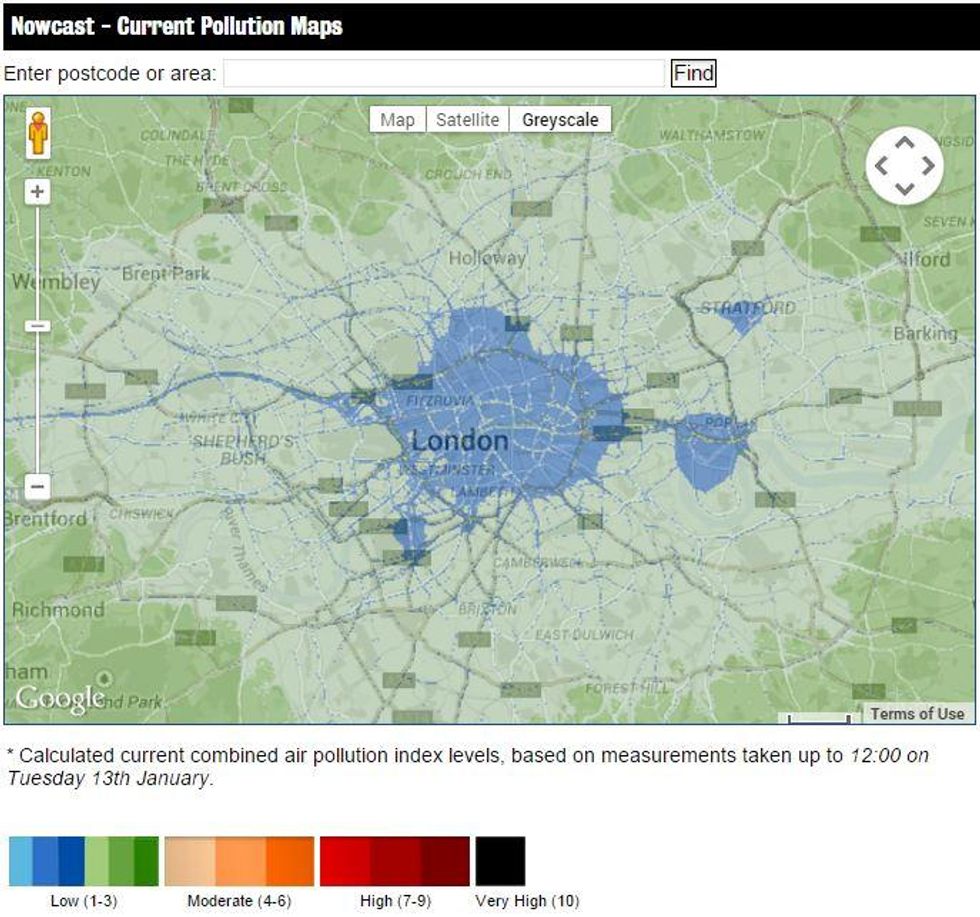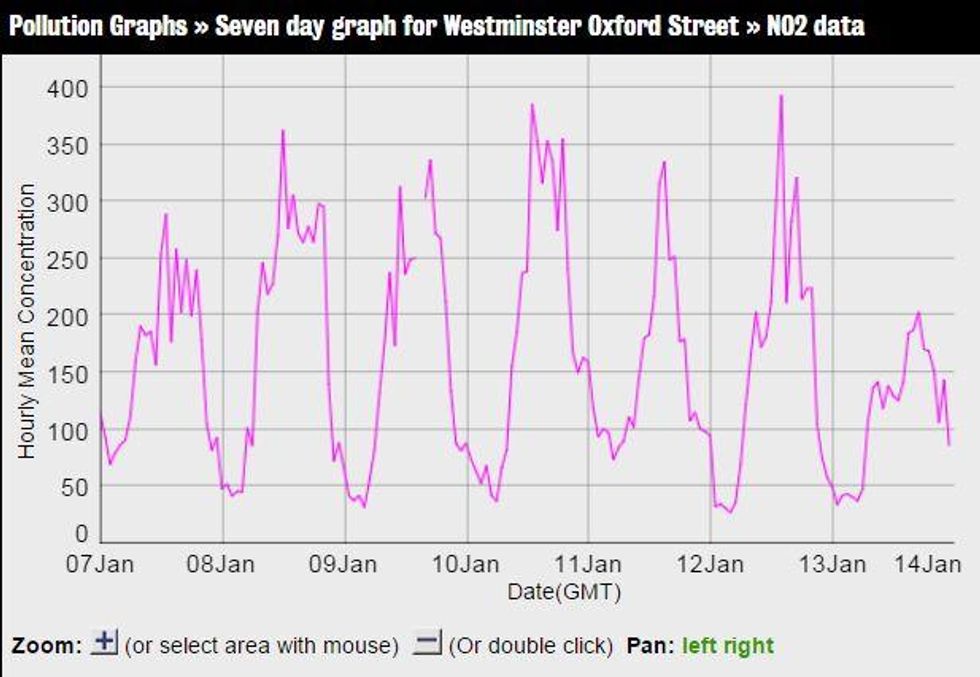News
Evan Bartlett
Jan 13, 2015

UPDATE: Nitrogen dioxide levels on Oxford Street - one of the most polluted roads in the world - were noticeably lower yesterday while a bus strike across the city was going on. This has led to increased calls for Oxford Street to be pedestrianised and for the city to invest in cleaner public transport.
London is experiencing low levels of pollution today and scientists have told i100.co.uk there is a "strong possibility" that the bus strike is the cause.
The London Air Quality Network, which measures pollutants from 50 sites across the capital, is showing particularly low levels across the city centre today - as seen on the below map (blue indicates very low levels).
While several factors can cause low levels, Dr David Carslaw from the Environmental Research Group at King's College London, told i100.co.uk there is a "strong possibility" that the lack of buses on the roads were behind them.
At many locations it would be expected that the bus strike would have a potentially large effect on air pollution close to roads.
In particular, and not surprisingly, those roads such as Oxford Street that have lots of buses and few other types of vehicle.
- Dr David Carslaw, King's College
Levels of nitrogen dioxide emissions - given off largely by diesel vehicles like buses - were much lower on Oxford Street at midday on Tuesday than on each of the previous seven days - as this chart shows:
Laura Young from the Met Office explained to i100.co.uk that the weather the country has been experiencing in recent weeks has also led to lower levels of pollution in general.
"It’s been quite windy all across the UK this week. When you have winds coming in from the west, south-west or north-west, as we have been having, that brings with it [cleaner] air from the Atlantic." she explained. Pollution levels tend to rise when easterly winds bring dirtier air from across the continent or indeed if there is little wind at all and pollutants do not get blown away.
"With strong westerly winds all this week, it’s likely that has been a main cause of low pollution levels and not purely the bus strike," Ms Young concluded.
However, with Oxford Street being one of the most polluted roads in the world Dr Carslaw says the bus strike offers a unique opportunity to study the causes of pollution in the capital - particularly with the weather remaining relatively consistent.
Because there are so many factors that cause pollution, it can be quite difficult to determine the exact cause.
In some ways, this unusual event [the bus strike] is a bit of an experiment and offers us an interesting opportunity to try to quantify the causes of pollution.
My suspicion is that buses are quite a big cause.
- Dr Carslaw
Dr Carslaw was eager to point out that at this stage there is no conclusive proof that the bus strike is the main reason for lower levels of nitrogen oxide, but he will be running today's data through some statistical models overnight to see what the expected levels would have been today - with the buses running as usual - compared to what they actually were.
More: Here's where you should live in London based on your personality type
Top 100
The Conversation (0)















